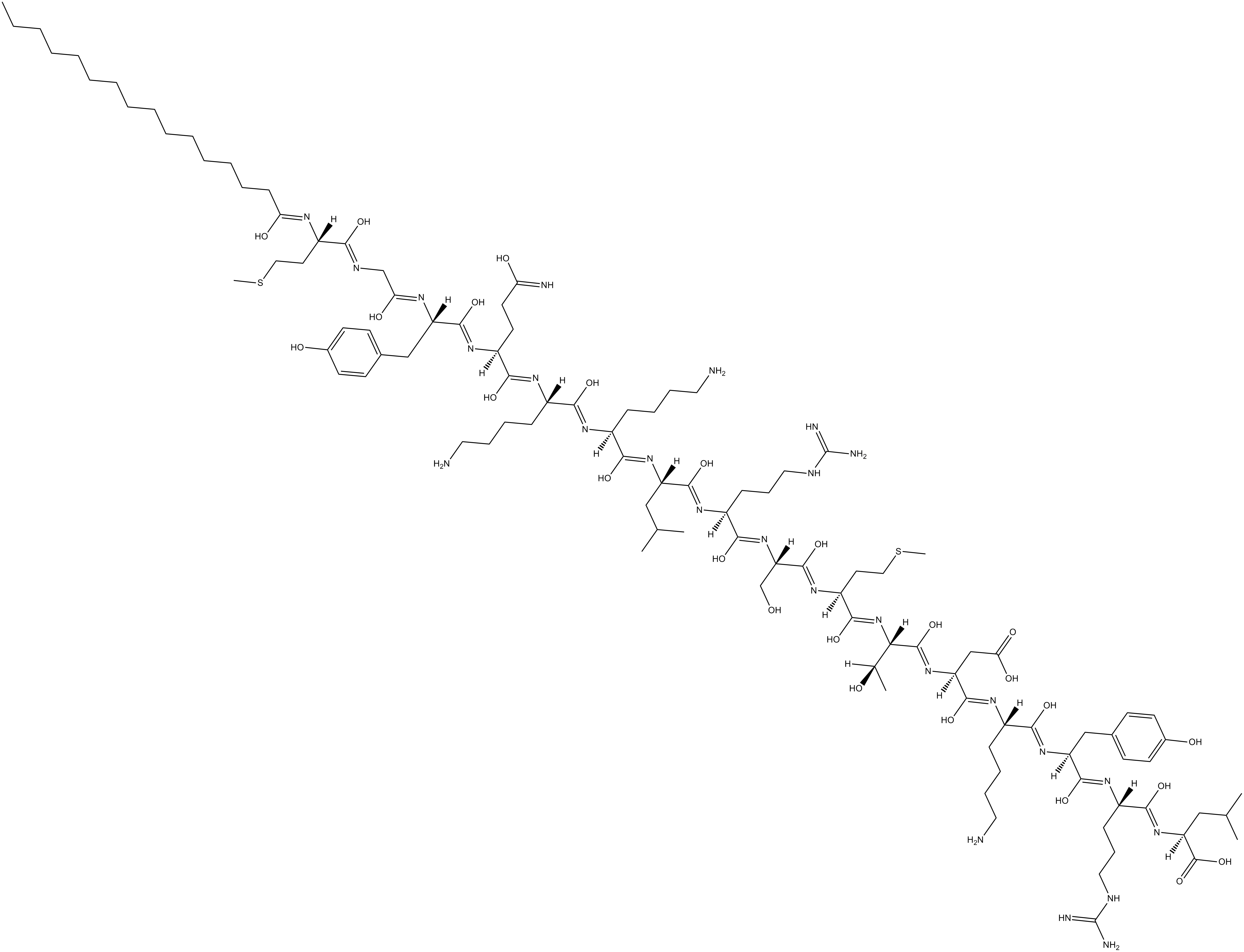ATI-2341 |
| رقم الكتالوجGC14711 |
ATI-2341 عبارة عن ناهض خيفي قوي وانتقائي وظيفيًا من النوع 4 لمستقبلات كيميائية C-X-C (CXCR4) ، والذي يعمل بمثابة رابط متحيز ، ويفضل تنشيط Gαi على Gα13
Products are for research use only. Not for human use. We do not sell to patients.

Cas No.: 1337878-62-2
Sample solution is provided at 25 µL, 10mM.
IC50: 194 nM
ATI-2341 is a CXCR4 allosteric agonist.
Chemokine CXC-type receptor 4 (CXCR4) and its ligand CXCL12 mediate the retention of polymorphonuclear neutrophils and hematopoietic stem and progenitor cells in the bone marrow. Drugs disrupting CXCL12-mediated chemoattraction of CXCR4-expressing cells are useful for hematopoietic stem and progenitor cells (HSPCs) collection.
In vitro: ATI-2341 could inhibit NKH477-induced cAMP accumulation in CXCR4-HEK cells dose-dependently, but showed no effect in naive HEK-293 parental cells. Pretreatment of CXCR4- HEK cells with pertussis toxin completely abrogated the ability of ATI-2341 to inhibit cAMP accumulation. ATI-2341 could also induce a dose-dependent increase in intracellular calcium in cells transfected with wild-type CXCR4 whereas having no effect on untransfected cells. Activation of such signaling pathway by ATI-2341 was dependent on a fully functional CXCR4 receptor since ATI-2341 was not able to mobilize calcium in cells transfected with a CXCR4 receptor variant [1].
In vivo: ATI-2341 could induce dose-dependent peritoneal recruitment of polymorphonuclear neutrophils (PMNs) when i.p. administered to mice. However, when systemically administered by i.v. bolus, ATI-2341 acted as an antagonist and could dose-dependently mediate release of PMNs from the bone marrow of mice and cynomolgus monkeys. In addition, ATI-2341-mediated release of granulocyte/macrophage progenitor cells from the bone marrow was further confirmed by colony-forming assays [1].
Clinical trial: Up to now, ATI-2341 is still in the preclinical development stage.
Reference:
[1] Tchernychev B et al. Discovery of a CXCR4 agonist pepducin that mobilizes bone marrow hematopoietic cells. Proc Natl Acad Sci U S A.2010 Dec 21;107(51):22255-9.
Average Rating: 5 (Based on Reviews and 26 reference(s) in Google Scholar.)
GLPBIO products are for RESEARCH USE ONLY. Please make sure your review or question is research based.
Required fields are marked with *




















